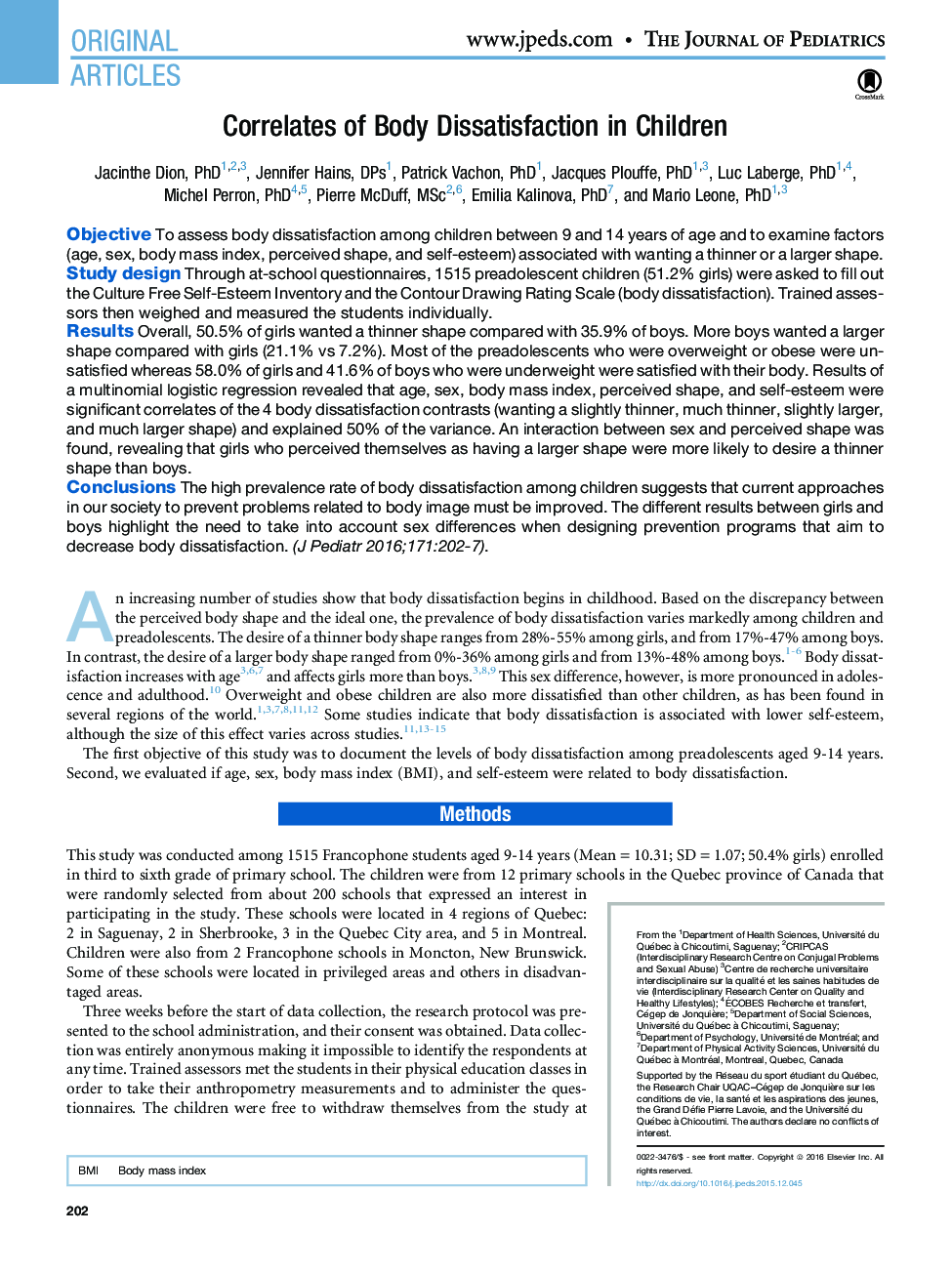| Article ID | Journal | Published Year | Pages | File Type |
|---|---|---|---|---|
| 4164558 | The Journal of Pediatrics | 2016 | 6 Pages |
ObjectiveTo assess body dissatisfaction among children between 9 and 14 years of age and to examine factors (age, sex, body mass index, perceived shape, and self-esteem) associated with wanting a thinner or a larger shape.Study designThrough at-school questionnaires, 1515 preadolescent children (51.2% girls) were asked to fill out the Culture Free Self-Esteem Inventory and the Contour Drawing Rating Scale (body dissatisfaction). Trained assessors then weighed and measured the students individually.ResultsOverall, 50.5% of girls wanted a thinner shape compared with 35.9% of boys. More boys wanted a larger shape compared with girls (21.1% vs 7.2%). Most of the preadolescents who were overweight or obese were unsatisfied whereas 58.0% of girls and 41.6% of boys who were underweight were satisfied with their body. Results of a multinomial logistic regression revealed that age, sex, body mass index, perceived shape, and self-esteem were significant correlates of the 4 body dissatisfaction contrasts (wanting a slightly thinner, much thinner, slightly larger, and much larger shape) and explained 50% of the variance. An interaction between sex and perceived shape was found, revealing that girls who perceived themselves as having a larger shape were more likely to desire a thinner shape than boys.ConclusionsThe high prevalence rate of body dissatisfaction among children suggests that current approaches in our society to prevent problems related to body image must be improved. The different results between girls and boys highlight the need to take into account sex differences when designing prevention programs that aim to decrease body dissatisfaction.
